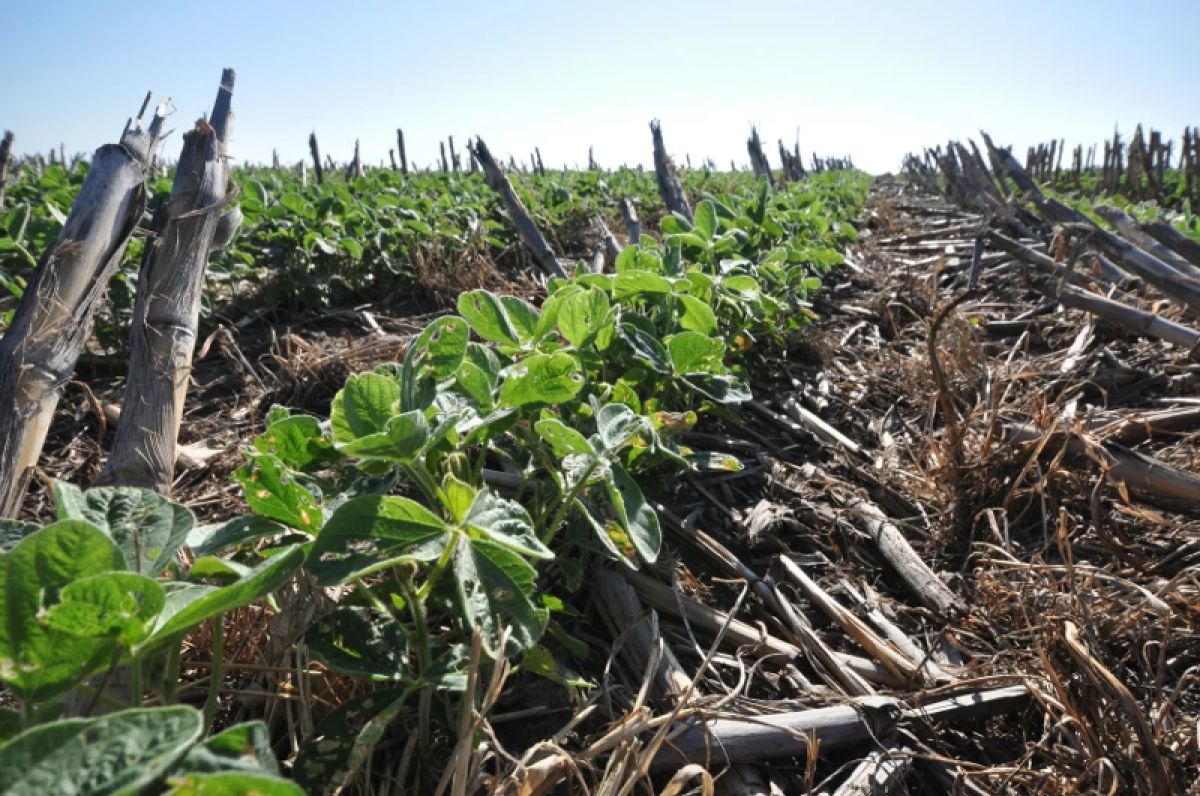
While cover crops were the most-funded practice for the USDA’s Environmental Quality Incentives Program, it was the only climate-smart practice among the top 10 practices that received funding. (Ron Nichols / USDA-NRCS)
The U.S. Department of Agriculture spent $7.4 billion in payments to farmers between 2017 and 2020 through two of its biggest conservation programs, but very little of that money went to practices that help fight climate change, according to a report from the Environmental Working Group.
“The USDA is really taking a super hard line right now at encouraging farmers to reduce their own emissions,” said Anne Schechinger, the Midwest director of the Environmental Working Group. “But with their own programs, we're just not seeing that this is the case. That the payments are not going to these practices that are likely to reduce emissions.”
In 2020, the agriculture industry accounted for more than 11% of greenhouse gas emissions in the U.S. With climate change’s growing impact on farming, the USDA’s Natural Resource Conservation Service created a list of practices that it considers climate-smart, defining those as agricultural practices that reduce greenhouse gas emissions or increase carbon sequestration.
The Environmental Working Group report argues the USDA's two biggest conservation programs — the Environmental Quality Incentives Program and the Conservation Stewardship Program — are the main avenues for incentivizing farmers to do climate-smart agriculture.
“These conservation programs are really the cornerstone of the USDA's policies that can help farmers mitigate climate change,” Schechinger said. “So these programs are super, super important to make sure they're incentivizing the right practices.”
Only 23% of payments from the Environmental Quality Incentives Program went to climate-smart practices. The Conservation Stewardship Program funded just 0.3% practices considered to mitigate climate change.
In a statement a USDA spokesperson wrote that the agency has since taken steps to better encourage climate-smart agriculture.
“Since day one, the Biden-Harris Administration has taken bold steps to support adoption of climate-smart agriculture and forestry through our existing voluntary conservation programs and has added new tools to the tool box,” the statement said.
Cover crops and waste storage
The report did highlight that cover crops, a climate-smart practice, were the most funded practice for EQIP. Cover crops are effective at keeping carbon in the ground and protecting soil if utilized consistently.
“Cover crops really have gotten a lot of money in the last couple of years,” Schechinger said. “And cover crops are great, but there's also 29 other practices on this list that are also really good at reducing greenhouse gas emissions. So it's important to not just put all of the money in one basket.”
Some of the practices that the report determined were the most funded actually produce more greenhouse gas emissions. For EQIP, the fifth most-funded practice was waste storage facilities, which release methane into the atmosphere.
Ryan Flickner, senior director of advocacy for the Kansas Farm Bureau, said while climate-smart practices are important, some others are essential for protecting natural resources. He noted that waste storage is meant to protect the nearby water from being polluted.
“When we start pitting climate-smart versus another natural resource concern, we're doing ourselves a disservice,” he said. “Because there is an underlying resource concern that even non-climate-smart practices are still helping to protect for future generations.”
Flickner added that for a state like Kansas, which has a lot of prairie and cattle ranching, more funding towards grazing land management (which is considered climate-smart) and irrigation systems (which is not) would be important; but for other states, their needs might be different.
And, he added, in order to get farmers to try climate-smart practices that they haven’t done before, it is important to provide the funding for it.
“We've gotta understand that whatever we do to the landscape, it does cost money,” Flickner said. “It is an expense that producers do bear.”
More transparency needed
Through the Inflation Reduction Act, CSP and EQIP will receive more money from the $19.5 billion in conservation funding allowing more farmers to take advantage of the programs. That funding is supposed to be used to support climate-smart agriculture.
“We will maximize climate-smart benefits through the funds provided through the Inflation Reduction Act, as well as through our existing Farm Bill conservation programs, utilizing the latest science, expanded capacity, and coordination with critical and new partners, all the while continuing to advance the voluntary and locally led nature of NRCS conservation assistance,” the USDA’s statement said.
Schechinger said that whether those funds go towards climate-smart practices remains to be seen. She pointed to the difficulty of getting the data in order to evaluate how the funding is spent. For instance, the CSP provided data sorted by the land use the funding went towards, such as cropland or pasture, not by practices used on the land.
“If the CSP is going to make a difference in reducing greenhouse gas emissions from farming, we really need to have better transparency to know what those billions of dollars are going to,” she said.
Eva Tesfaye covers agriculture, food systems and rural issues for KCUR and Harvest Public Media and is a Report For America corps member. Follow Eva on Twitter @EvaRTesfaye.
This story was produced in partnership with Harvest Public Media, a collaboration of public media newsrooms in the Midwest. It reports on food systems, agriculture and rural issues. Follow Harvest on Twitter: @HarvestPM













